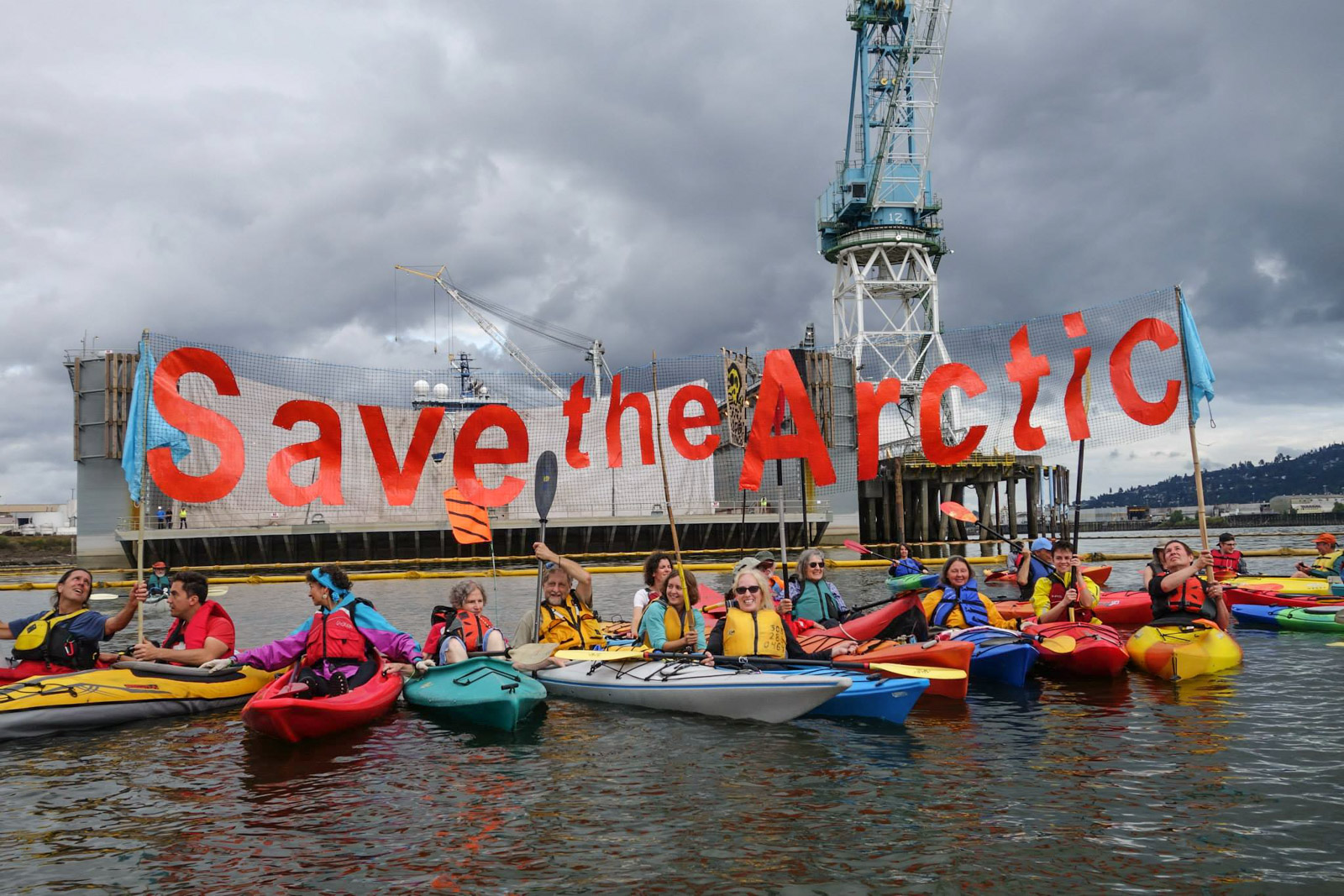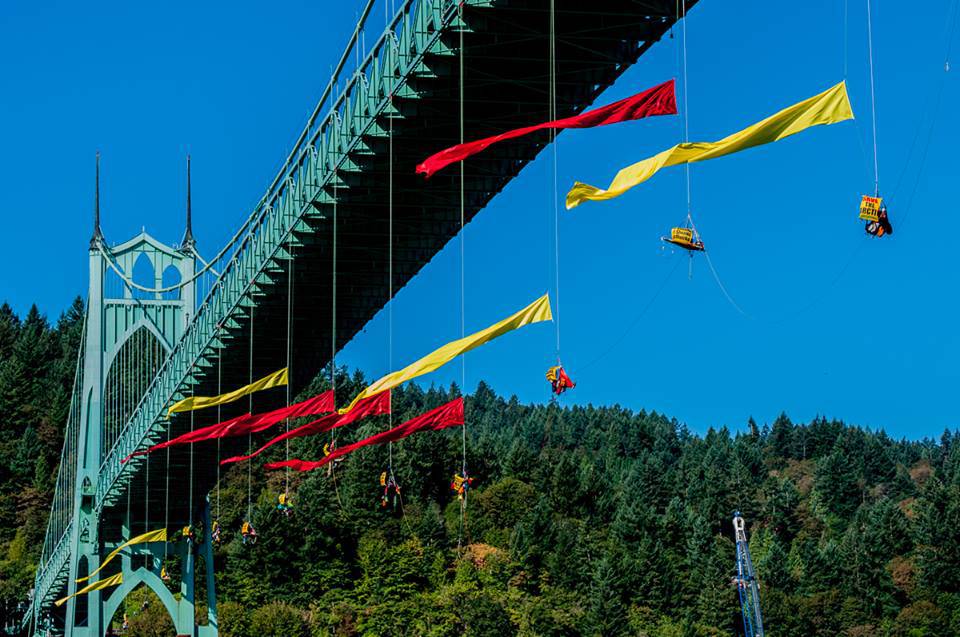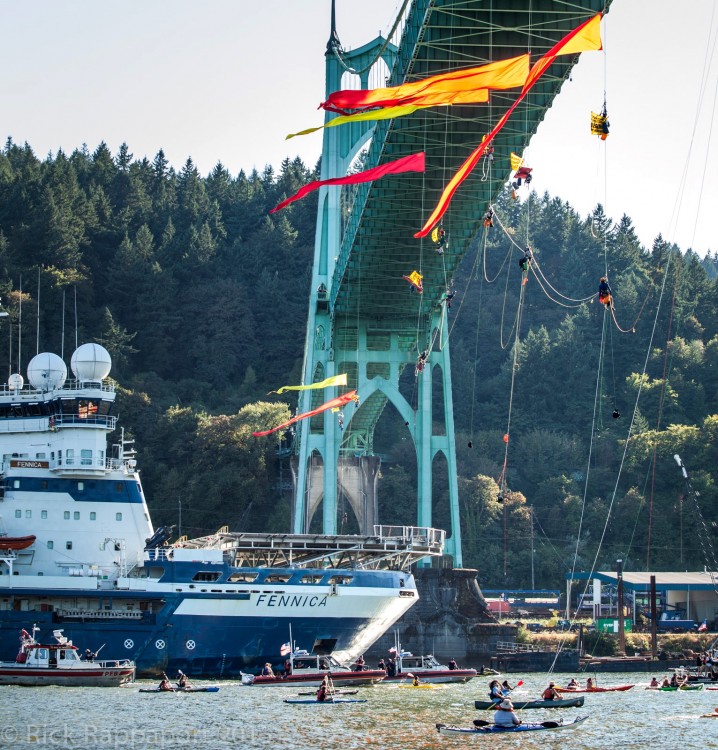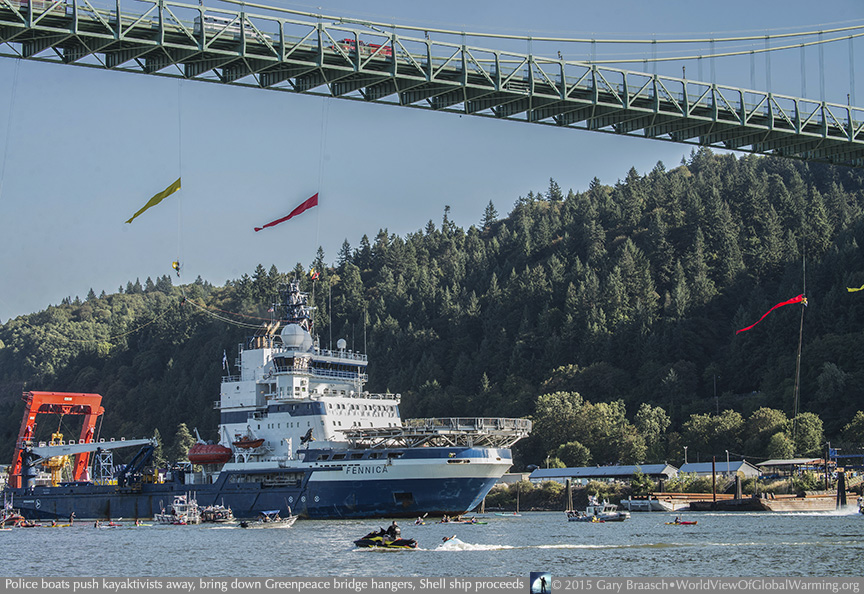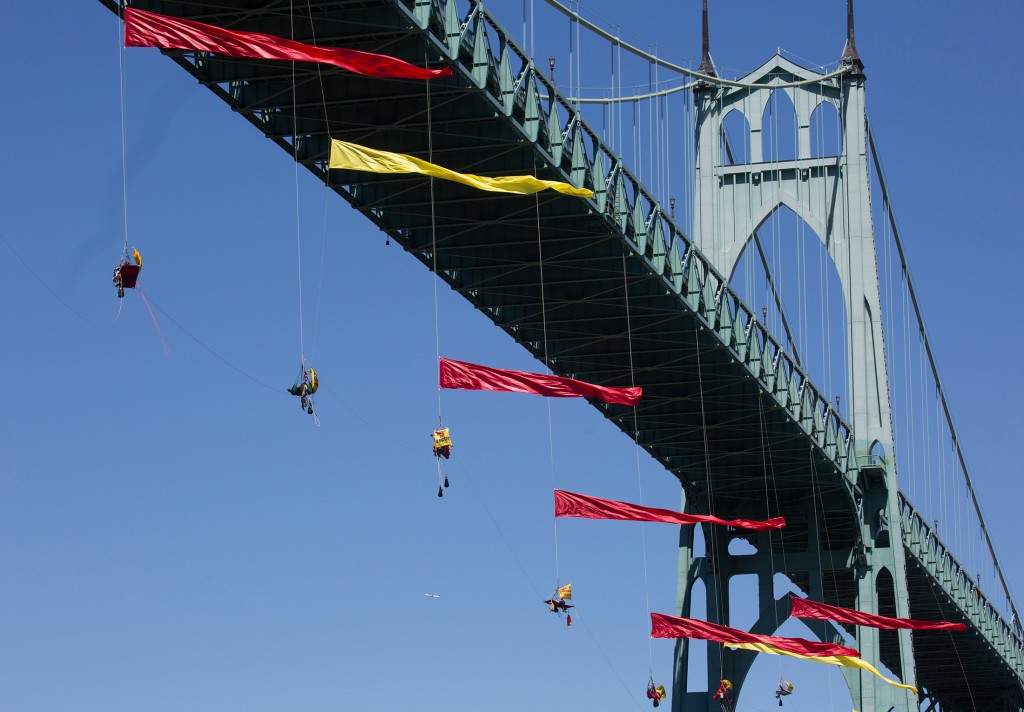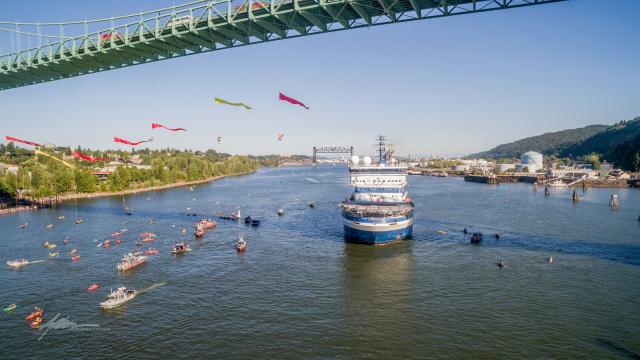
Retired professional photographer Rick Rappaport was standing in 6 inches of water on the overcrowded floating dock, watching the drama unfold before him.
The Fennica, a massive Shell icebreaker ship, was inching down Oregon’s Willamette River en route to Alaska. It threaded between Greenpeace climbers who’d suspended themselves on ropes from the St. John’s Bridge like 13 human-sized chrysalises, their yellow and red wing-like banners fluttering in the hot breeze.
Beneath them, kayakers were paddling madly, attempting to impede the ship from departing for drilling in the Arctic.
Rappaport asked a young tattooed man next to him if he could use his shoulder to support a telephoto lens. The man obliged. But, as he started to shoot, Rappaport noticed his lens start to move wildly up and down: The young man was sobbing.
“I found myself welling up too,” Rick said later on in a group email. For observers who understood the stakes, it was hard not to cry.
The ship’s departure meant that the “kayaktivists,” together with the Greenpeace activists who’d put their bodies on the line for 40 straight hours, had failed. The icebreaker had broken free of its Lilliputian constraints and now barreled out to sea to commence an oil drilling project in the waters north of Alaska.
According to the Department of Interior, there’s a 75 percent chance of a spill once Arctic drilling commences. Though Shell claims otherwise, a spill there could be impossible to contain.
Moreover, drilling in the virgin Arctic means tapping into oil reserves that scientists say we must leave in the ground to avoid irreversible climate change.
Rappaport did pull it together. His spectacular photos ended up on the Rachel Maddow Show and elsewhere. But he was a changed man.
The Fennica fight was only the latest in a growing movement across the Northwest. With little to no activist experience, people like Rappaport are stepping forward to block new gas pipelines, along with coal, oil, and gas export terminals. They’re even attempting to stop the accident-prone trains hauling thousands of barrels of fracked crude oil across vast distances in their tracks.
We call this emerging people-powered resistance movement “Blockadia.” A well-known banner hung from another Portland bridge sums it up: “Coal, Oil, Gas: None shall pass.”
The reason for this blockade is clear. The Sightline Institute has identified 28 new fossil fuel export projects slated for the Pacific Northwest whose collective carbon load would be five times greater than the infamous Keystone XL pipeline — the ill-fated piece of oil infrastructure that former NASA climate scientist James Hansen said would be “game over” for the planet all on its own.
Though we lost this round with the Fennica fight, we Blockadians have discovered that together, we’re quite powerful.
For example, after months of campaigning beginning last fall, the Climate Action Coalition persuaded Portland Mayor Charlie Hales to pull his support from the single largest business investment in our city’s history: a propane export facility that would have brought mile-long propane trains to town every day from Alberta.
And more recently, we helped persuade the Ecumenical Ministries of Oregon to endorse a resolution calling for an end to all new fossil fuel infrastructure in Oregon.
So the faith community, tattooed young folk, retirees, and other people from all walks of life agree: Business as usual is inconsistent with survival. We’re prepared to give it our all to stop it.
Our elected officials should heed this urgent call before it’s too late.
Daphne Wysham directs the Climate and Energy Program at the Center for Sustainable Economy in Portland, Oregon, and is an Institute for Policy Studies associate fellow.
3 WAYS TO SHOW YOUR SUPPORT
- Log in to post comments


